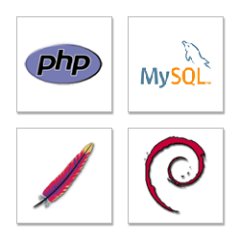Categories
- animatronics (12)
- apple (11)
- arduino (179)
- art (41)
- articles (121)
- artificial intelligence (11)
- automation (421)
- avr (205)
- bitcoin (3)
- breadboard (9)
- cameras (57)
- cars (26)
- cell phones (28)
- clothing mods (21)
- console mods (26)
- dangerous (94)
- desktop mods (24)
- embedded (5)
- flying things (54)
- fpga (22)
- gaming creations (108)
- interface (225)
- internet (17)
- laptop mods (6)
- lasers (22)
- linux (7)
- magnetic (3)
- medical (12)
- microcontrollers (51)
- misc projects (152)
- msp (12)
- music (124)
- pic (90)
- projects (23)
- pyroedu (76)
- raspberry pi (26)
- robots (312)
- security (36)
- sensors (307)
- software (200)
- solar (19)
- stamp (9)
- tools (149)
- tutorials (98)
- Uncategorized (45)
- usb (44)
- wireless (256)
Sponsors


Posted September 6, 2014 by Syd
We are excited to announce the winners of the Pyro POV Contest! Thank you everyone who participated. Your entries were all great examples of Persistence of Vision and we enjoyed looking through each of them.

Posted August 22, 2014 by Syd
Just a reminder to all you Pyros out there: there are just 8 days left to enter the Pyro POV Contest! If you’re not sure how to build a POV device, no problem, PyroEDU has you covered! Check out our latest lesson Course 5: FPGA and CPLD » Lesson 9: Design a Handheld POV to learn how. Get those entries in soon for your chance to win a Basys2 Spartan-3E FPGA Development Board. Good luck!

Posted July 25, 2014 by Syd
We are excited to announce a new contest we will be hosting over the next several weeks!
Build your very own electronic device to demonstrate Persistence of Vision (POV) using an FPGA or CPLD. Visit the Contest Page for details on how to enter, prizes, and more. Also, visit the Pyro Propeller Clock POV Project to get an idea what POV is. If you’re unsure how to build one, don’t worry! PyroEDU’s 5th Course: FPGA and CPLD will soon cover how to build your own handheld POV device, just in time to build one before the contest ends on August 30th, 2014. Good luck!

Posted July 10, 2014 by Syd
This week we’re moving on to Lesson 3: Input & Output in our new PyroEDU course: An Introduction to CPLD and FPGA. Here’s an overview of the lesson:
"All FPGA and CPLD devices have general purpose input and output pins, often called GPIO. Here we will take a look at how to build a CPLD image and hardware to accept push-button input in order to affect output LEDs."

Posted July 9, 2014 by Syd
Jameco Electronics is giving away free electronic components on a weekly basis starting this Friday July 11th! The free parts are awarded on a first-come first-served basis so be sure to check Jameco Free Fridays every Friday at 10 a.m. Pacific Time for your chance to win!

Posted March 6, 2014 by Syd
We are just one week away from publishing PyroEDU’s fourth course, An Introduction to Microcontrollers and we’re really excited to share it with you. Our friends over at Gadgetory.com are offering parts kits that provide all the materials necessary to complete the course. If you’ve bought a kit for a previous PyroEDU course, all you need is the Components Kit. If this is your first time buying a kit, you will want the Complete Kit.

Posted February 21, 2013 by Syd
“In this article, we will be looking once again to lessen the burdens of every day life by automating some of the tasks which take up our precious time. We will be using Cron, a time-based job scheduler in Linux to periodically run scripts to do things we would normally have to do manually.”

Posted February 14, 2013 by Syd
“In this article, we will once again be using the magic of software to enhance our lives. We will be using a technique known as web scraping to gather weather information to prepare for whatever mother nature throws at us. This could be useful if you live in a suburb and must commute some distance to work in the city.”

Posted February 7, 2013 by Syd
“In this article, we will be using an old unused machine along with free software to create a web server with the capability to handle all our web application development needs. We will be using the Linux operating system and installing Apache HTTP Server, MySQL, and PHP. Whether you are a seasoned web developer or just starting out in HTML, this is a vital first step.”

Posted December 1, 2011 by Syd
“In this article we are going to use the Last.fm web service to grab the last piece of data we need to make our music collection perfect: the album artwork. We’re going to use the same techniques we’ve used in the past articles to expand the functionality of our application to do something new. With the concepts we employed in the previous articles, the possibilities are nearly limitless.”







